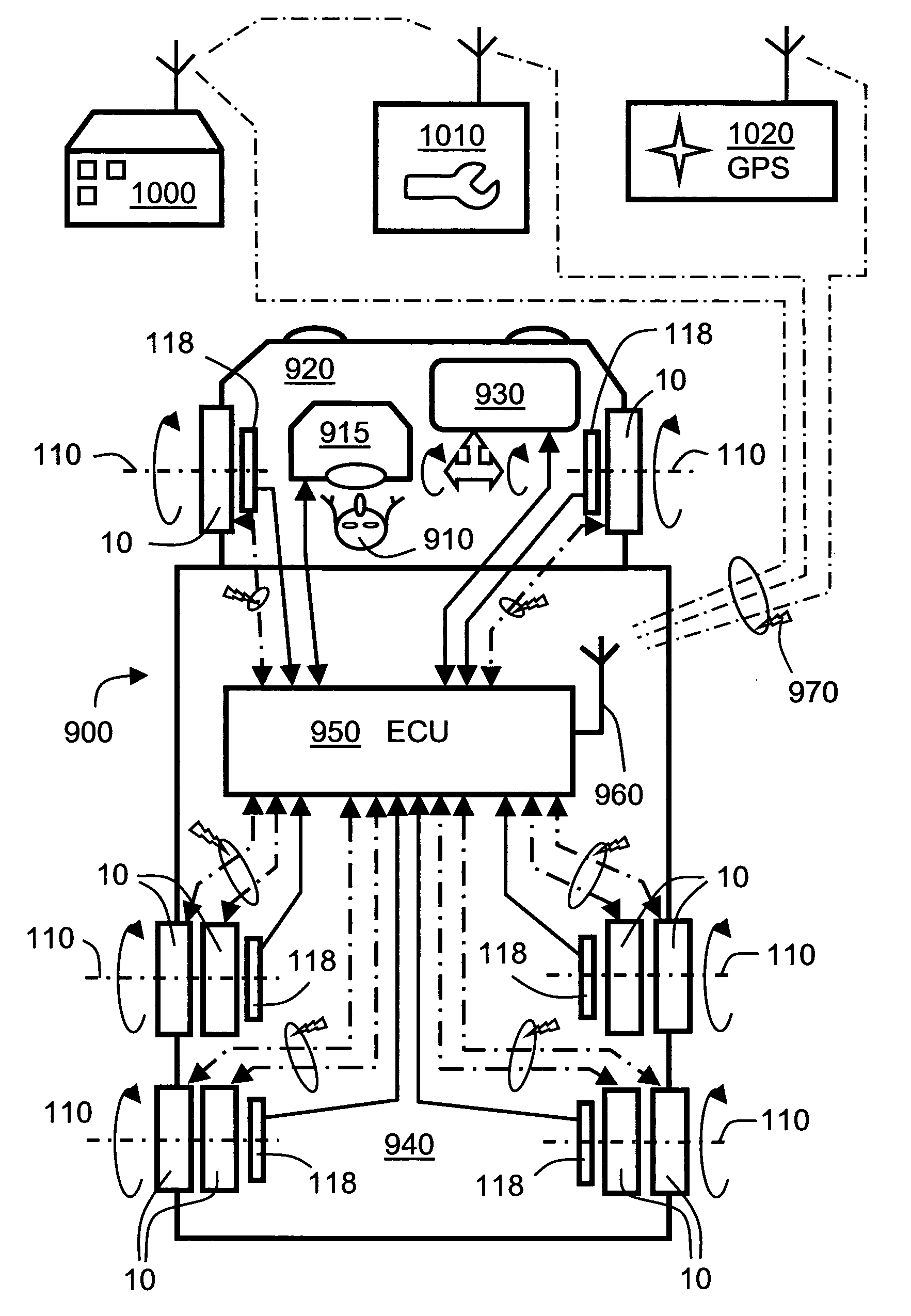Method of identifying positions of wheel modules
a technology of positioning position and wheel module, which is applied in the direction of transportation and packaging, instruments, and static/dynamic balance measurement, etc., can solve the problems of affecting the fuel economy of associated vehicles, affecting and a relatively modest degree of energy dissipation. , to achieve the effect of enhancing the safety and reliability of such vehicles
- Summary
- Abstract
- Description
- Claims
- Application Information
AI Technical Summary
Benefits of technology
Problems solved by technology
Method used
Image
Examples
Embodiment Construction
1. Context of the Present Invention
[0071]Commercial enterprises which operate fleets of vehicles, for example fleets of heavy commercial vehicles, face different problems with vehicle maintenance and safety in comparison to private automobile owners for which simple contemporary tyre monitoring devices have already been developed as elucidated in the foregoing. Reliability and safety for an enterprise operating a fleet of vehicles is extremely important on account of one accident, breakdown or legal incident potentially adversely affecting the enterprise's reputation and relationship with its customers. Vehicle maintenance, and avoidance of vehicle technical problems before they arise and cause disruption, is of considerable importance to enterprises operating fleets of vehicles.
[0072]In a fleet of vehicles, for example heavy commercial vehicles, there are multiple vehicles, and a set of wheel hubs for the vehicles which are equipped with new tyres at various times. Wheel hubs can p...
PUM
 Login to View More
Login to View More Abstract
Description
Claims
Application Information
 Login to View More
Login to View More - R&D
- Intellectual Property
- Life Sciences
- Materials
- Tech Scout
- Unparalleled Data Quality
- Higher Quality Content
- 60% Fewer Hallucinations
Browse by: Latest US Patents, China's latest patents, Technical Efficacy Thesaurus, Application Domain, Technology Topic, Popular Technical Reports.
© 2025 PatSnap. All rights reserved.Legal|Privacy policy|Modern Slavery Act Transparency Statement|Sitemap|About US| Contact US: help@patsnap.com



